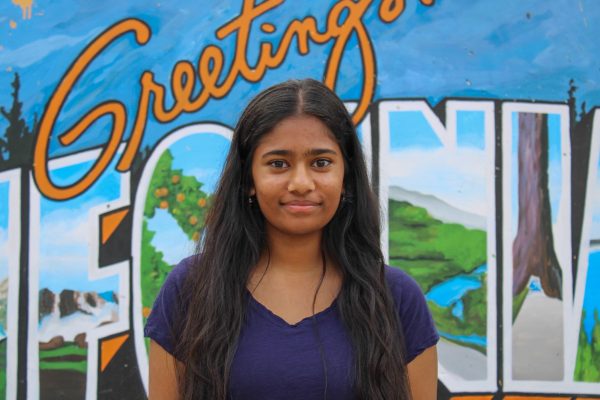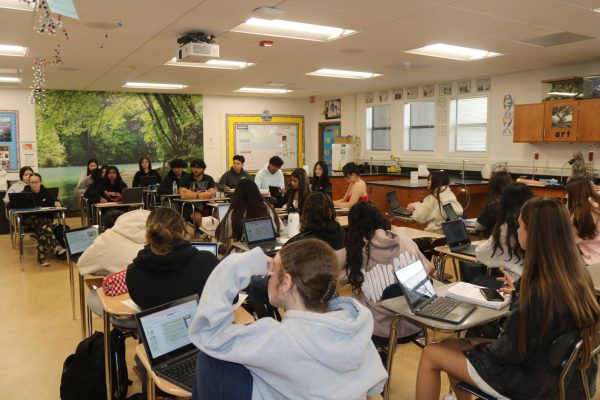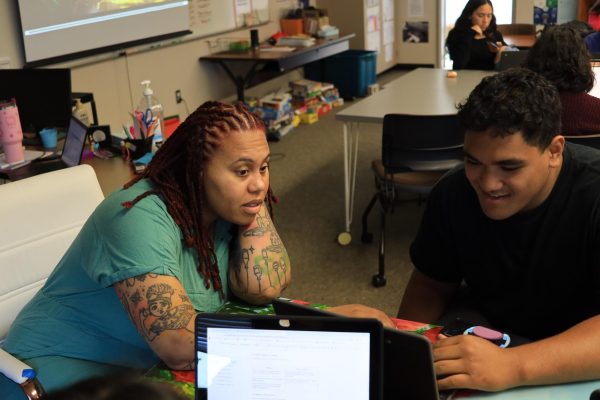Many Cal High students looking into careers in AI
With the introduction of ChatGPT and many other artificial intelligence machines, the interest in studying AI and the demand for careers in this field has naturally increased.
Many universities and high schools have started offering courses to meet the demand for the interest, and Cal High is no exception.
Cal’s Career and Technology Education (CTE) pathways courses such as AP Computer Science Principles (CSP), AP
Computer
Science A (CSA),
Introduction to Engineering, and other ROP classes in the engineering pathway. These classes can be viewed as the fundamentals for studying AI.
Counselor Jon Sawyer said there aren’t any courses offered in Cal that thoroughly teach AI. But he recommends taking classes in the Information and Communication Technology (ICT) Pathway.
“The Computer Science Principles and the Computer Science Advanced classes are what I think would best prepare somebody for [studying AI],” Sawyer said. “I haven’t heard any whispers [of introducing a new AI class] as of yet.”
CSP teacher Sean Raser said there is a possibility of a third computer science class being introduced next year called XR: For Social Good. He said the class would go into more detail about how technology can be used for solving social problems. It would not be part of the AP program.
“I think in that class, they might have more flexibility to explore relevant topics like AI and the metaverse,” Raser said. “As an AP class your curriculum is kind of limited by the college board.”
As read in The Californian’s story about deepfakes, with privacy violations or biased data being involved in AI technology, some students, like freshman Shivani Annamalai, believe that the XR class would be helpful for students interested in both social justice and computer science.
“I am sure many others would be interested in this class,” Annamalai said.
Junior Nityashri Palanisamy, who plans on majoring in computer science, said taking CSP and CSA helped her learn more about AI.
“I learned [in the classes]that AI is a much faster and efficient way of optimizing data and producing outcomes than humans can’t,” Palanisamy said. “[CSA and CSP] both helped me learn programming languages such as Java, Python…and taught me how to approach and solve different problems using logic we learned in class.”
There is more to the future of AI for students who want to study two different fields which ultimately require learning computer science.
Junior Samiya Phadtare has a keen interest in the intersection of computer science and learning about the brain. She thinks the way AI works is very similar to human intelligence, so AI will continue to evolve and grow rapidly.
“When I go to college I want to study cognitive science because I want to learn about computers and coding languages and also learn about the brain,” Phadtare said. “I think that AI is only going to become more prominent in the future than it is now.”
For students like senior Ian Bryant, who is fascinated by AI algorithms, completing the Information and Communication Technology (ICT) Pathway is a great way to start learning the basics and the applications of computer science.
“I am also going to be taking machine learning courses along with discrete math and linear algebra due to AI being a math heavy field,” said Bryant, who plans to major in computer science.
A strong understanding of applied mathematics and statistics, programming languages, and machine learning are just a few of the skills required to land a job in AI technology.
Previously, people had to major in a subject that would allow them to gain some understanding about AI. But now, programs and courses teaching people thoroughly about AI are starting to be offered by universities globally.
One of these majors includes the metaverse, which is essentially a virtual reality major. This major includes a class that was brought to life by Stanford University professor Jeremy Bailenson, the founding director of Stanford’s Virtual Human Interaction lab.
This class mainly focuses on virtual reality, a simulated environment generated by a computer.
Even universities are starting to open up in the metaverse. These newfound institutions are called “metaversities”.
An example of a metaversity would be the new virtual metaversity which the California State University (CSU) system introduced.
CSU Dominguez Hills Digital Twin Metaversity was built by VictoryXR, a company that specializes in VR Education Software and Augmented Reality Learning.
Professors also teach biomedical engineering courses in the CSU system virtually through the metaverse. Students can still work together like they would in a traditional campus.
Ultimately, the expansion of such technology enables more development for AI technology and jobs in the metaverse.

Junior Mansi Swaminathan is returning for her third year with The Californian, now as Managing Editor. Her main goals for the paper this year are to get...



